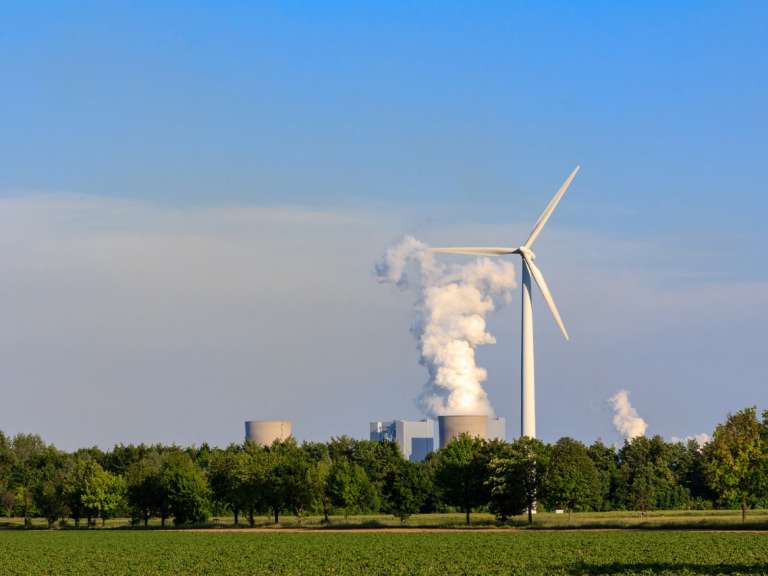While the US government has withdrawn its support for the Paris climate accord, at least 30 states are vowing to create the regulatory framework to enact environmental policy. That is, at the state level, they are encouraging the use of more renewable energy and greater energy efficiency. By extension, those same states are discouraging the use of coal-fired generation that they say is responsible for about a third of all man-made CO2 emissions, according to the state of New York.
Utilities are Planning for the Future
With that, utility plant managers are left to decide exactly how they will meet their demands, while corporate executives must design their long-term business strategies. The reality is that state-driven environmental policy now requires low-carbon fuels and cleaner technologies. As such, it appears that natural gas will continue to replace coal in this country, while many states will increase their renewable portfolio requirements.
In 2016, CO2 emissions were 18 percent less than they were in 2005, the Energy Information Administration (EIA) said. The EIA also reported that last year CO2 releases dropped 5 percent for electric generators—a reflection of those environmental policies.
States for Paris
Specifically, California, New York, and Washington, which make up a fifth of the US economy and 10 percent of its greenhouse gas emissions, announced the formation of the United States Climate Alliance, which is a coalition of those states willing to commit to the terms of the Paris Agreement. That accord would work to keep global temperatures from rising more than 2 degrees Celsius by midcentury. These states "are committed to achieving the US goal of reducing emissions 26–28 percent from 2005 levels and meeting or exceeding the targets of the federal Clean Power Plan," according to the state of New York.
"We will not ignore the science and reality of climate change, which is why I am also signing an Executive Order confirming New York's leadership role in protecting our citizens, our environment, and our planet," Governor Cuomo said in a statement, according to the state of New York.
New York, for example, has an aggressive environmental policy—one that seeks to decrease its heat-trapping emissions by 40 percent below their 1990 levels by 2030. The goal is 80 percent below that threshold by 2050. To get there, New York is participating in a regional cap-and-trade program to trade emissions credits. New York is also requiring its utilities to provide 50 percent of their electricity from renewables by 2030. The state is investing $1.65 billion in green energy and energy efficiency.
California, meanwhile, aims to reduce CO2 levels by 40 percent from 1990 levels by 2030. By 2050, California hopes to have cut its greenhouse gas emissions by 80 percent. Transitioning to renewables is one way. Using its existing cap-and-trade system is another.
California Governor Jerry Brown will host an international global warming summit next year in San Francisco, according to the Governors' Wind & Solar Energy Coalition. "We in California and in states all across America believe it's time to act," Governor Brown said.
States Against
There are at least 10 states against both the Paris Agreement and the regulatory efforts to curb carbon at home. Ten state attorneys general sent a letter to the president that emphasized the need for portfolio diversity. Alabama, Arkansas, Kansas, Louisiana, Missouri, Nebraska, South Carolina, Texas, West Virginia, and Wisconsin all signed the letter. Those states are all focused on using coal for electricity or producing it for sale.
"(T)he continued participation of the United States in the Paris Agreement creates significant practical and legal concerns of great importance to our States and our constituents," the attorney generals wrote, according to the State of West Virginia Office of the Attorney General.
The Power of States
In the US, utilities are regulated at the state level by public service commissions that set their rates of return while state legislatures craft the environmental policies and fuel requirements. For example, at least half of the states have renewable portfolio standards in some form. For their part, utilities have created two-way communications with their customers to help them shift their energy usage—a move that has helped them to successfully integrate wind and solar on to their grids.
Whether due to the federal Clean Power Plan or the state-led renewable portfolio standards, the push toward lower carbon fuels has accelerated the use of natural gas that is now cheap and abundant. Without that strategy, natural gas generation use would fall by 11 percent by 2030, says the EIA.
"Utilities have built gas plants and they will use them," says Kit Konolige, senior utilities analyst for Bloomberg Intelligence.
Utility plant managers have long recognized that the move toward cleaner burning fuels is driven foremost by market demand and advances in technology. As a result, many of them are well into implementing those strategies and thus support environmental policies to enable the transition.
